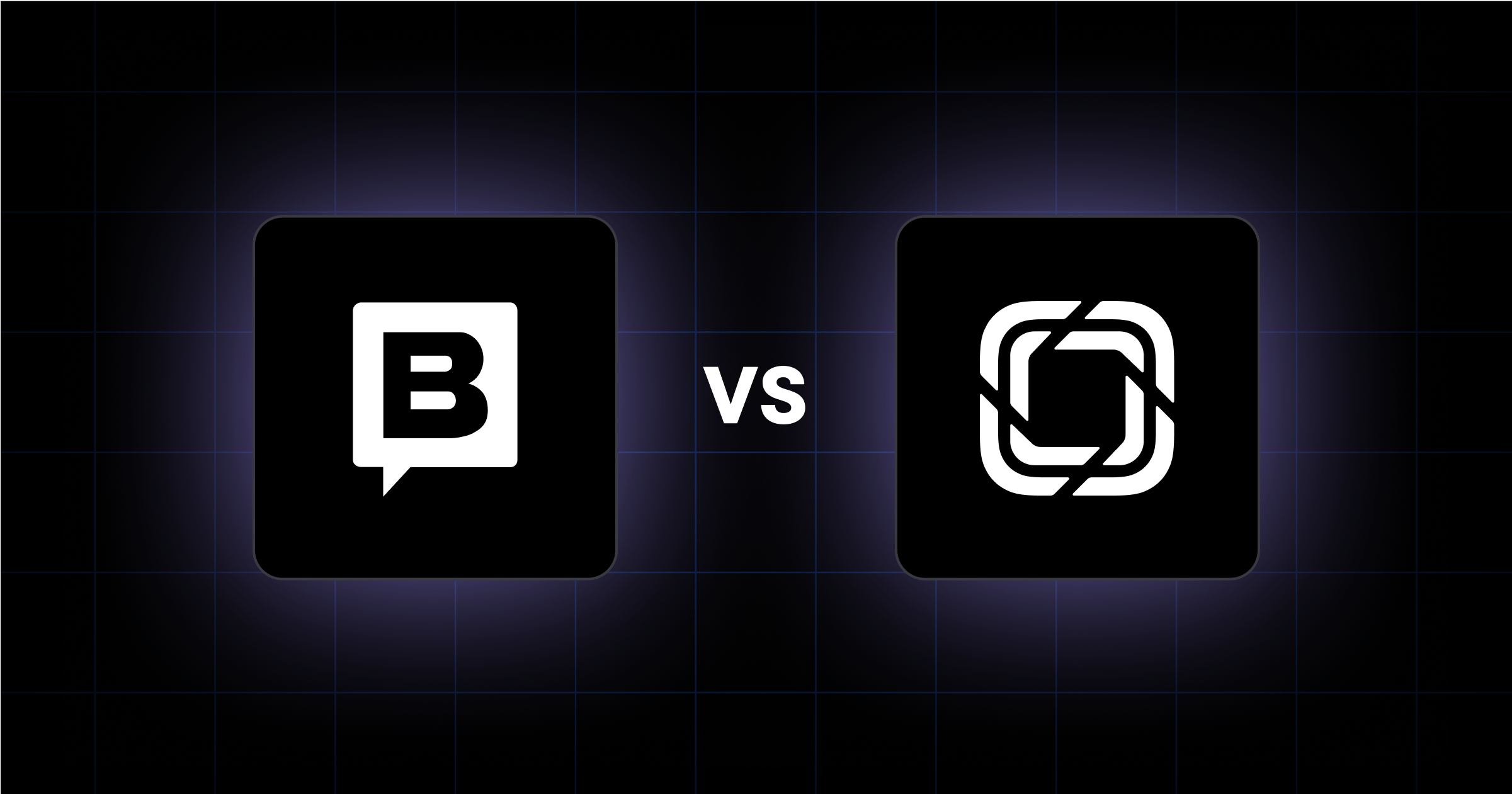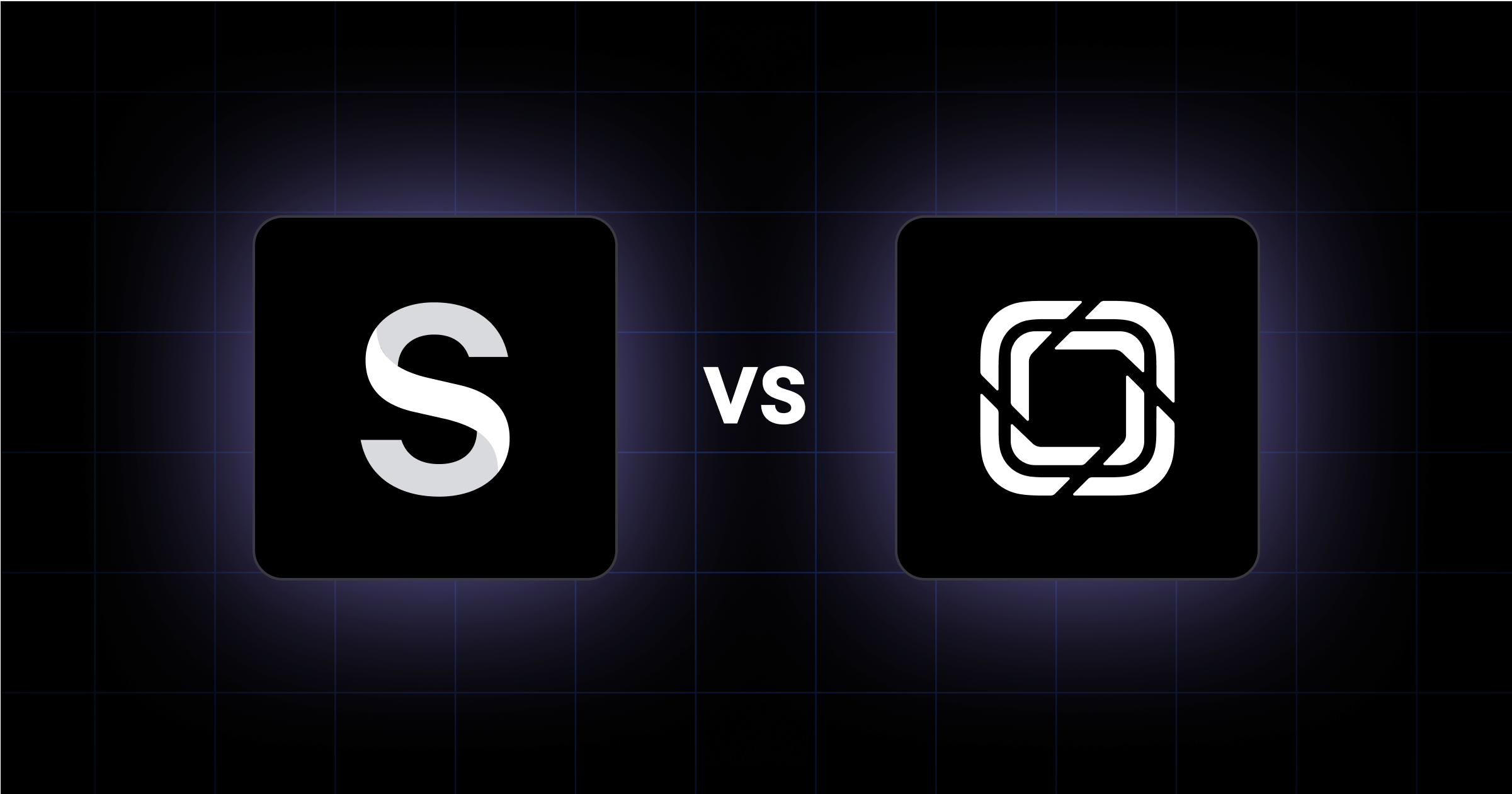As you work to modernize your company's web infrastructure, Sanity and Strapi frequently come up as top contenders for a headless CMS since both offer unique features and capabilities that benefit fast-growing tech companies.
In this guide, we'll explore their core architectures, customization options, and integration capabilities to help you decide which platform aligns best with your needs.
In brief:
- Sanity offers a managed SaaS solution with real-time collaboration, ideal for content-focused teams lacking infrastructure management resources.
- Strapi provides an open-source, self-hosted CMS with extensive customization options, suitable for developers seeking full control over their CMS infrastructure.
- A systematic decision framework can help you evaluate which platform aligns best with your organization's requirements.
Sanity vs Strapi: Platform Overview
Sanity and Strapi represent two fundamentally different approaches to headless CMS platforms.
Technology Stack and Architecture
Both Sanity and Strapi offer architectures that place them among the best enterprise CMS platforms. Sanity is built on a React.js-powered studio interface with a backend on Google Cloud infrastructure. This setup supports real-time collaboration, letting multiple team members work on content simultaneously without conflicts. With its structured content approach, your content becomes a single source of truth accessible through their API.
Strapi takes a different path with its Node.js foundation and TypeScript support. Its architecture is entirely open-source, giving you complete control over every aspect of your CMS, including the admin panel, models, and middleware. This access makes Strapi particularly appealing for projects requiring extensive customization or specific compliance needs.
Infrastructure and Hosting Options
Sanity runs on a Software-as-a-Service (SaaS) model, handling infrastructure management on your behalf. This eliminates the need for server maintenance and simplifies scaling, though it means you're dependent on their hosting environment. While Sanity's Studio component is open-source, the core product remains proprietary.
Strapi provides more flexibility in hosting options. You can self-host the CMS or deploy it through Strapi Cloud. The self-hosted option supports multiple databases, including SQLite, MySQL, and PostgreSQL, giving you control over your data layer. Managing your own infrastructure allows for maximum control over your deployment environment but also adds maintenance responsibilities.
API and Integration Capabilities
Both platforms excel in API capabilities but take different approaches. Sanity offers a real-time API, letting you subscribe to content changes—ideal for applications needing live updates. With an API-first design, content is instantly available through their Content Lake, accessible via GROQ or GraphQL.
Strapi provides REST and GraphQL APIs out of the box, with well-documented endpoints you can customize. The platform's plugin system extends these capabilities further, allowing you to add features like authentication, email services, and custom endpoints. With 90,000 weekly NPM downloads, Strapi's robust developer community continues to expand these integration options.
Use Case Analysis
The best platform for your project depends on your use case. Let's analyze the ideal scenarios for each platform across key considerations.
Project Scale and Complexity
Sanity excels in projects requiring sophisticated content structures and real-time collaboration. This makes it a strong contender when evaluating options like Sanity vs HubSpot CMS. You'll find it particularly valuable if your project involves:
- Multiple teams working simultaneously on content
- Complex content relationships and structures
- Need for real-time preview and collaborative editing
For instance, media companies with dynamic content updates or e-commerce sites with extensive product catalogs can benefit from Sanity's real-time collaboration features.
Strapi shines in projects demanding extensive customization and API flexibility. It's ideal when:
- You need complete control over your content architecture
- Your project requires custom plugins and extensions
- You're building progressive web applications or IoT integrations
For example, developers designing bespoke IoT applications or custom dashboards may prefer Strapi's open-source flexibility.
Your Team's Composition
The effectiveness of each platform depends heavily on your team's technical expertise. Sanity is the better choice if:
- Your content team includes non-technical users
- You want to minimize development overhead
- You need an intuitive interface for content editors
Strapi is more suitable when:
- You have strong technical resources in-house
- Your team is comfortable with Node.js
- You want complete control over the admin panel and middleware
Infrastructure Requirements
Infrastructure needs vary significantly between the platforms. Choose Sanity if:
- You prefer a managed solution without server maintenance
- You want automatic scaling and content delivery
- Your team lacks DevOps expertise
For example, a marketing team at a mid-sized company without dedicated IT resources may find Sanity's managed services advantageous.
Opt for Strapi when:
- You need to host the CMS on your infrastructure
- Compliance requirements demand complete control over hosting
- You have the technical expertise to manage servers
For instance, enterprises with strict data security policies or regulatory compliance requirements might choose Strapi for its self-hosting capabilities.
Budget Implications
Your budget and resource allocation will impact your decision. Sanity is suitable when:
- You value managed infrastructure over lower upfront costs
- Your budget can accommodate a hosted solution
- You want to minimize operational overhead
Strapi is cost-effective when:
- You have existing infrastructure or hosting capabilities
- You're comfortable managing your own servers
- Open-source flexibility is a priority for your project
Decision Framework
When choosing a headless CMS, a systematic approach is always beneficial. Here's a structured framework to guide your decision-making process:
Conduct a Technical Requirements Assessment
Map your technical requirements across these key areas:
- API performance needs and expected response times
- Required integrations with your existing tech stack
- Security requirements and compliance standards
- Content delivery architecture, including CDN requirements and multi-region deployment
- Authentication and user management needs
Evaluate Team Capabilities
Assess your team's readiness and capabilities:
- Development team's expertise with JavaScript and React, crucial for both platforms
- Content team's technical comfort level
- Available internal resources for maintenance and updates
- Need for external developers or consultants
Consider each department's specific requirements:
Developers
- API flexibility
- SDK availability
- Documentation quality
Marketing
- Content modeling capabilities
- Workflow tools
- Preview functionality
Content
- Authoring experience
- Collaboration features
- CMS localization tools
Operations
- Security requirements
- Scalability needs
- Monitoring capabilities
Analyze Scalability Needs
Evaluate your growth trajectory and how it impacts:
- Expected content volume and complexity
- Anticipated user load and traffic patterns
- Future integration requirements
- Geographic expansion plans
- Multi-channel content delivery needs
Calculate Total Cost Considerations
Calculate the complete financial impact:
- Initial licensing and setup costs
- Development and customization expenses
- Training and onboarding requirements
- Ongoing maintenance and support costs
- Potential switching costs if platform changes are needed later
When evaluating total cost of ownership, consider both immediate expenses and long-term implications. Factor in the potential need for specialized developers, training time for content teams, and any required integrations or custom development work.
Final Thoughts on Sanity vs Strapi
Sanity and Strapi offer compelling features, and the ideal choice depends on how their features align with your requirements.
Sanity's managed, user-friendly platform is excellent for teams prioritizing content collaboration without the overhead of infrastructure management. Strapi offers unparalleled customization and control, appealing to development teams wanting a self-hosted solution.
Whichever option you choose, our free headless CMS implementation checklist will guide you every step of the way and ensure a seamless migration.




